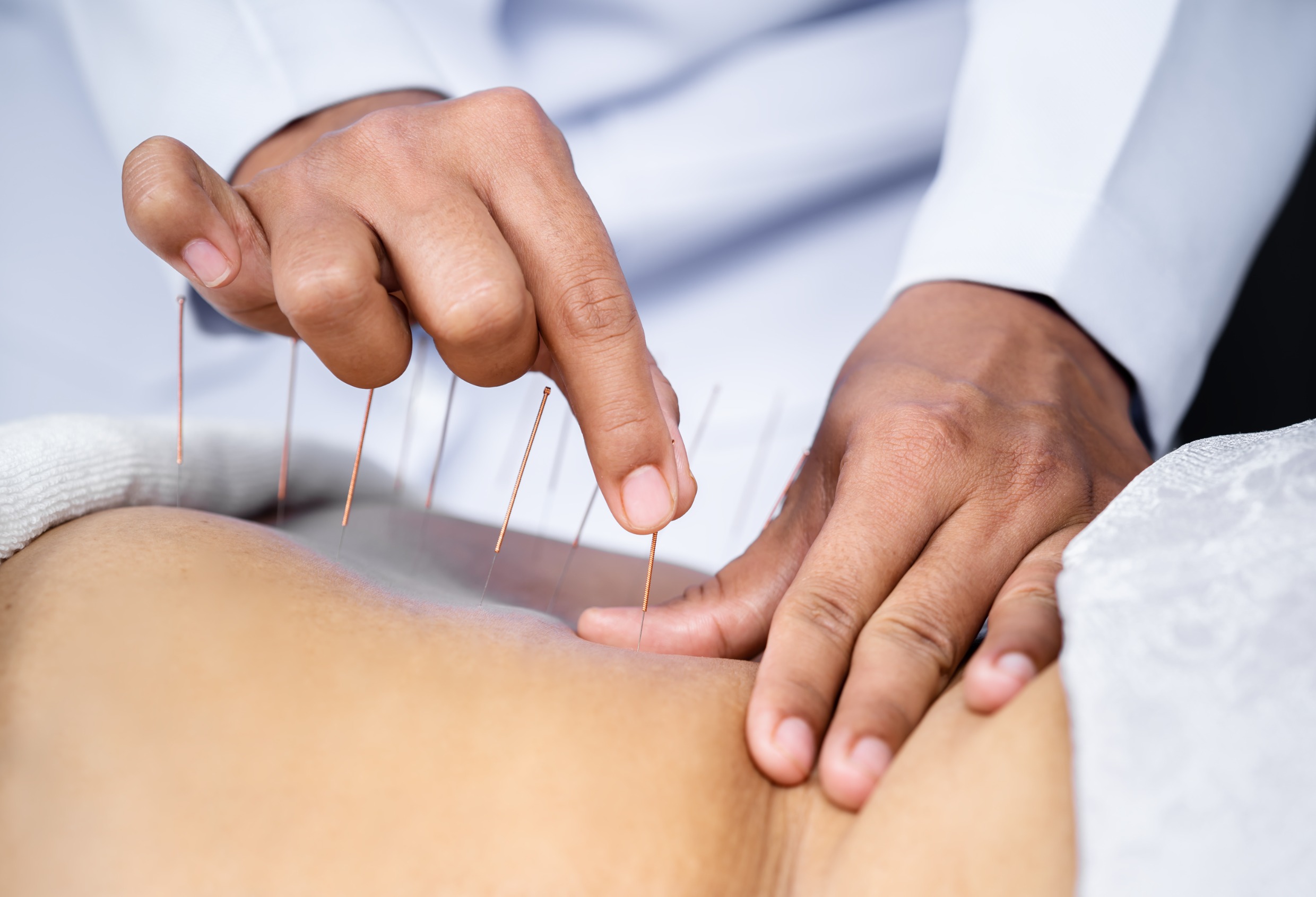Understanding Sciatica
Before examining acupuncture’s possible therapeutic advantages for sciatic pain, it is critical to understand the many symptoms it causes as well as its repercussions.

Concept of Acupuncture
This traditional Chinese medicinal procedure complements modern wellness with its perspective of ancient wisdom. The concept underlying it is the conviction that Qi, or energy flow, travels through the body’s meridians, enabling practitioners to apply needles to certain spots on the body to relieve pain and restore balance. Acupuncture follows the principle of stimulating the body’s innate healing mechanisms, fostering harmony between mind, body and spirit. Beyond relieving pain, it also addresses a spectrum of ailments, from stress and insomnia to digestive disorders and migraines. Its holistic approach considers individual well-being, aiming to treat systems while cultivating vitality. This affirms its profound interconnection of human health and wellness.
Its Effect on Sciatica
When treating sciatica, medical practitioners focus on meridian spots starting from the lower section of the back, and moving down to the leg, and foot. This technique enhances blood supply to problematic regions while stimulating endorphin synthesis. The insertion of needles into precise locations causes the production of endorphins, a natural body’s mechanism for pain relief. Acupuncture’s major discovery in clinical research is its effectiveness in alleviating symptoms of sciatica, with many patients reporting less discomfort and increased mobility. Ideally, this traditional procedure provides a comprehensive and non-invasive solution to individuals suffering from sciatic pain. Not only does it treat physical agony but also addresses the root cause of the problem. In essence, acupuncture offers an integrated approach that fosters long-term relief from pain and enhanced well-being for sciatica patients.
Individual Responses to Acupuncture
How different individuals respond to acupuncture when treating sciatica varies widely. For some, the ancient practice brings swift relief, alleviating searing pain, restoring mobility, and fostering a sense of wellness. These individuals experience a profound easing of tension when fine needles stimulate specific points, unblocking energy flow along meridians. However, others find acupuncture offers only temporary respite or no discernible change at all. Factors such as the severity of the condition, the body’s unique constitution, and the skill of the acupuncturist all contribute to the outcomes experienced by individuals seeking relief from sciatic discomfort.
Integration with Standard Therapy
Combining acupuncture with other therapies provides a complete approach to sciatica relief. Patients can experience relief by using acupuncture, which targets particular places on the meridians to restore energy flow, in conjunction with complementary therapies such as stretching exercises, physical therapy and chiropractic adjustments. Besides stimulating the production of endorphins, this traditional procedure also minimizes inflammation and promotes relaxation. It aims to address both symptoms and underlying causes of sciatica patients. Additionally, incorporating modalities like herbal remedies or heat therapies can enhance the efficiency of this procedure, fostering a synergistic effect for the long-term management of sciatic pain. When we reduce the discomfort that comes with this condition, affected individuals may experience improved mobility and peace of mind.
There is great potential in using acupuncture as a supplementary form of treatment for sciatica patients. Although the scientific evidence for its efficiency is encouraging, individual reactions to this treatment procedure may vary. As with any alternative treatment, consulting with healthcare specialists is essential to developing a complete, tailored strategy for pain management. When used alongside conventional therapies, acupuncture can alleviate symptoms of pain and enhance the well-being of patients living with sciatica.

